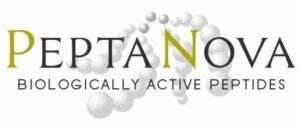Muscarinic Toxin 3
MT3; MTX3; m4-toxin
(Green Mamba, Dendroaspis angusticeps)
4410-s 0.1 mg | 230.00 EUR
Leu – Thr – Cys – Val – Thr – Lys – Asn – Thr – Ile – Phe – Gly – Ile – Thr – Thr – Glu – Asn – Cys – Pro – Ala – Gly – Gln – Asn – Leu – Cys – Phe – Lys – Arg – Trp – His – Tyr – Val – Ile – Pro – Arg – Tyr – Thr – Glu – Ile – Thr – Arg – Gly – Cys – Ala – Ala – Thr – Cys – Pro – Ile – Pro – Glu – Asn – Tyr – Asp – Ser – Ile – His – Cys – Cys – Lys – Thr – Asp – Lys – Cys – Asn – Glu
| (M.W. 7379.4) | C319H489N89O97S8 |
Synthetic Product (disulfide bonds between Cys3– Cys24, Cys17– Cys42, Cys46– Cys57 and Cys58– Cys63 )
The purity of muscarinic toxin-3 is guaranteed to be higher than 99% by HPLC
Specifc Ligand for Muscarinic Acetylcholine Receptor-4 (M4)
Muscarinic toxin 3 (MT3) was originally isolated from the green mamba (Dendroaspis augusticeps) venom and is composed of 65 amino acid residues. Muscarinic toxin-3 shows a high selectivity for the M4 receptor with low affinity to M1 receptor [FEBS Lett., 352, 91 (1994)], and no binding to M2, M3, and M5 receptors [FEBS Lett., 352, 91 (1994), Toxicon, 34, 1257 (1996), Life Sci., 60, 1069 (1997), Eur. J. Pharmacol., 357, 235 (1998)].
Combined utilization of these chemically synthesized muscarinic toxins together with already commercially available MT1 and MT7, the research concerning biological functions elicited through muscarinic acetylcholine receptors should advance significantly.
References:
- A. Adem and E. Karlsson, Life Sci., 60, 1069 (1997) (Pharmacol.; Muscarinic Receptor Subtype Specificity)
- M. Jolkkonen, P.L.M. van Giersbergen, U. Hellman, C. Wernstedt, and E. Karlsson, FEBS Lett., 352, 91 (1994) (Original; MT3)
- J.-S. Liang, J. Carsi-Gabrenas, J.L. Krajewski, J.M. McCafferty, S.L. Purkerson, M.P. Santiago, W.L. Strauss, H.H. Valentine and L.T. Potter, Toxicon, 34, 1257 (1996) (Original; m4-toxin)
- S. Katayama, M. Ishimaru, H. Nishio, Y. Nishiuchi and T. Kimura, Peptide Science 2004,161 (2005) (S-S Bond)


